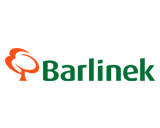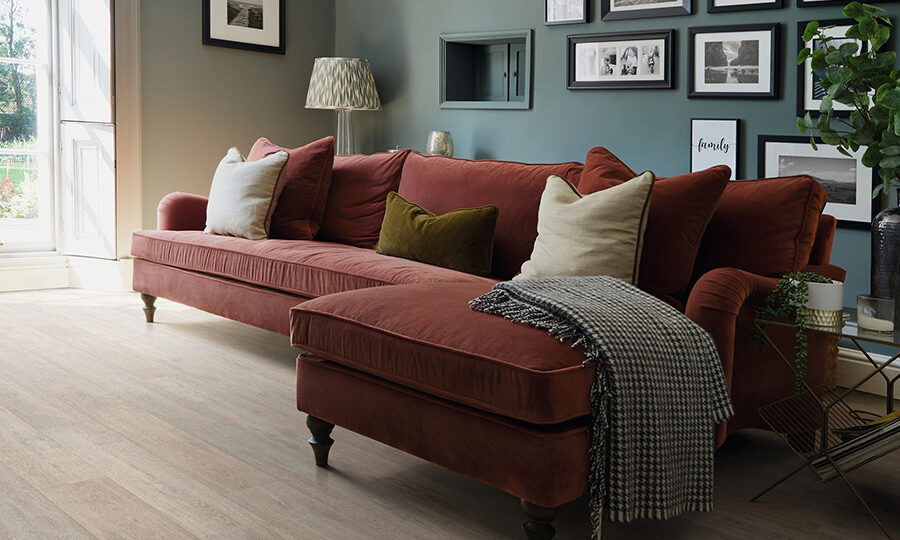Luxury Vinyl Tile (LVT) flooring is rapidly gaining popularity among homeowners and commercial spaces due to its remarkable durability, low maintenance requirements, and extensive design options. However, selecting the right LVT flooring and install it for your space can be a daunting task given the wide variety available. Fear not! This comprehensive guide will expertly navigate you through the fascinating world of LVT flooring, decoding intricate specifications, exploring various installation choices, delving into captivating design aspects, and shedding light on selecting the right luxury vinyl plank flooring.
Decoding LVT Terms
One common point of confusion in the world of Luxury Vinyl Tile (LVT) flooring is the term Luxury Vinyl Plank (LVP). In essence, LVT and LVP refer to the same thing. The only difference is in the shape: LVT is cut into tiles, whereas LVP is cut into planks also known as luxury vinyl plank flooring, making it resemble traditional hardwood flooring. In the United Kingdom both tiles and vinyl planks are normally referred to as Luxury Vinyl Tiles (LVT).
Now let’s dive into the core composition of materials for LVT and LVP. Both flooring product are typically constructed with a base of PVC (Polyvinyl Chloride) or SPC (Stone Plastic Composite). PVC-based flooring is more flexible and comfortable underfoot, with good sound-absorbing qualities. On the other hand, SPC offers remarkable rigidity and stability, making it an excellent choice for high-traffic areas or commercial spaces.
Finally, let’s talk about the wear layer. The wear layer is a transparent, protective coating that sits on top of the design layer of LVT and LVP flooring. It’s responsible for protecting your flooring from scratches, scuffs, and general wear and tear. The thickness of the wear layer typically varies from 6 to 30 mils (a mil is one thousandth of an inch), with wear layer thickness the thicker the wear layer the more foot traffic it can resist.
Decoding LVT Flooring Specifications
When it comes to LVT flooring, understanding the specifications is the key to making an informed decision. The wear layer thickness, for instance, plays a crucial role in determining the flooring’s durability and resistance to high traffic. Additionally, the thickness of surface texture of the vinyl floors brings its own set of benefits and considerations – thicker vinyl floors offer superior comfort underfoot, while thinner options are perfect for smaller areas where a sleek profile is desired. It is imperative to carefully evaluate these aspects and determine which LVT flooring specifications align with your needs.
Exploring Luxury Vinyl Tiles Installation Choices
Vinyl flooring offers a range of installation types, each with its own set of advantages and considerations. Whether you opt for the stability of glue-down LVT flooring, the convenience of floating installation, or the ease of click-lock (dry-back) installation, understanding the trade-offs will help you make the right choice for your specific needs. Glue-down LVT flooring, for instance, provides exceptional stability and is ideal for high-traffic areas, while click-lock installation offers hassle-free and time-saving benefits.
Unleashing Creative Luxury Vinyl Plank Flooring Designs
The design of your vinyl floor is a vital consideration in creating the desired ambiance and aesthetic appeal. LVT vinyl flooring comes in a plethora of styles, from classic planks that exude timeless elegance to trendy herringbone patterns that add a touch of modern sophistication. With an extensive range of colours, textures, and patterns, you can unleash your creativity and bring your design vision to life, whether you desire to create the warmth and authenticity of real wood or the captivating allure of natural stone.
How much does Vinyl Flooring Cost?
Luxury Vinyl floors Flooring is a flooring option that stands as a cost-effective solution for your flooring needs. Its durability and long-lasting nature mean that you will not be frequently incurring replacement costs. Despite the premium look and feel, LVT is considerably more affordable than genuine real wood or stone flooring. This makes it a preferred choice for budget-conscious individuals who do not wish to compromise on style or quality.
Choosing the Right Wear Layer
An essential aspect to consider when selecting your Luxury Vinyl Tiles (LVT) flooring is the wear layer. The wear layer is the topmost layer of the flooring that takes the brunt of daily wear and tear, thus playing a critical role in the durability of your vinyl flooring throughout. It’s particularly important for areas with high footfall such as hallways, living rooms, and commercial premises. A thicker wear layer will be able to withstand the increased footfall in these areas, ensuring that your flooring remains in top condition for longer. By choosing a higher wear layer for high footfall areas, you not only maintain the aesthetic appeal of highest quality of your flooring but also contribute to its longevity and the overall cost-effectiveness of your investment.
Underlay Considerations for LVT Flooring
When it comes to LVT flooring, making the right choice regarding underlay is just as vital as the surface material. Underlay, the thin layer of material directly underneath your vinyl plank flooring, plays a key role in the performance and life of your flooring. Some LVT flooring options come with a built-in underlay, offering an all-in-one solution for installation. This type of flooring can be laid directly onto the subfloor, saving time and effort during installation. It can also provide additional warmth, noise reduction, and comfort underfoot.
On the other hand, an external underlay, purchased separately from the LVT flooring, has its advantages. It allows for a greater level of customisation based on your specific needs such as moisture control, sound reduction, or thermal insulation. This is especially beneficial if the subfloor has issues that need to be addressed prior to installation, such as uneven surfaces or moisture-prone areas. However, it’s important to note that using an external underlay requires careful selection to ensure it’s compatible with other features of your chosen LVT flooring. Navigating these considerations will help you make an informed decision, enabling you to enjoy the maximum benefits of your LVT flooring investment.
Can I use Underfloor Heating with LVT?
A key advantage of Luxury Vinyl Plank Flooring is its compatibility with warming features. One such feature that most LVT options can accommodate is a certain popular warming system – which ensures a pleasant, even heat distribution across your floor. Coordinating this system with LVT can enhance comfort, especially in colder months. However, it’s crucial to choose LVT flooring that’s specifically designed to withstand this heating method, and also consult with a flooring professional to ensure optimal installation and performance. This way, you can enjoy a warm, cosy floor without compromising on the quality and longevity of your LVT investment.
Installation of Luxury Vinyl Planks
There are various methods for installing vinyl flooring, and the choice largely depends on the specific product and the homeowner’s preferences. ‘Glue down’ installation is a common method used with LVP, offering a secure and long-lasting solution. This method is particularly beneficial for vinyl planks, as it provides a stable base, reducing the likelihood of movement and gaps. However, it’s essential to ensure that the subfloor is clean and level before installation to guarantee a successful outcome. Remember, PVC vinyl, the material used in LVP, is well-regarded for its water resistance, so you can rest assured about its performance in moisture-prone areas. Therefore, with careful selection and proper installation, you’ll be able to enjoy the many benefits of your vinyl flooring investment for years to come. We go into more detail about this in our ‘How to lay LVT’ guide.
Easy Maintenance and Cleaning
One of the key advantages of LVT flooring is its ease of maintenance. Unlike hardwood that requires polishing or carpet that necessitates frequent vacuuming, LVT flooring can be easily cleaned with a damp mop and mild soap. Its resilient surface resists stains and spills, making it a practical and durable choice for high-traffic living areas, or homes with young children and pets.
Choosing the perfect LVT
When selecting the right vinyl flooring for your space, consider factors such as water resistance, durability, style, and installation method. Luxury Vinyl Planks (LVP) are a popular choice for many homeowners due to their appearance, which mimics natural materials like wood or stone, and their impressive water resistance. This makes them an ideal choice for areas prone to moisture, such as kitchens or bathrooms. Additionally, LVP flooring is manufactured from high-quality PVC vinyl, known for its robustness and longevity.
Jamie Hall, the driving force behind Flooring King's website as Director, leads a revolution in the flooring industry. With vast experience and unwavering dedication, Jamie transforms conventional practices. He pioneers advanced technologies to ensure client satisfaction and continually raises industry standards.












